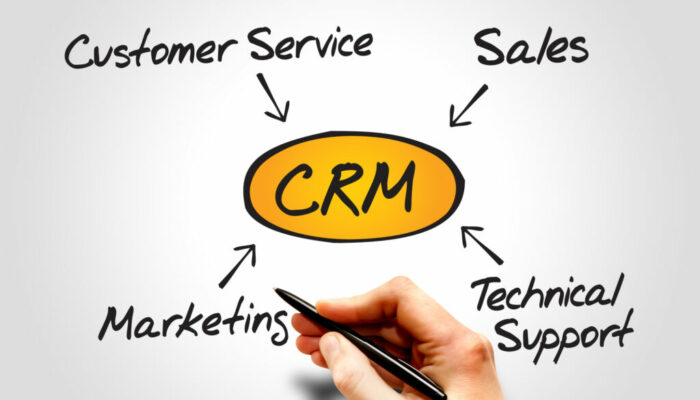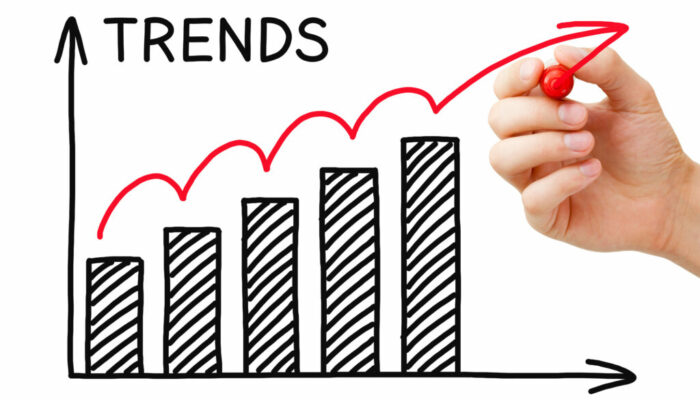Understanding the Retail Analytics Landscape

Understanding the retail analytics landscape involves gaining a comprehensive view of the data available and the tools to interpret it. Retailers can achieve this by investing in user-friendly analytics platforms, hiring or training staff with data analysis skills, and keeping abreast of advancements in analytics technology.
Analytics Tools: Choose analytics tools that align with the retailer’s size and needs. For instance, a boutique might start with simple tools like Google Analytics, while a large department store might invest in more robust solutions like Tableau or Power BI.
Staff Training: Ensure that staff members are well-versed in using analytics tools. Conduct training sessions to familiarize them with data interpretation, report generation, and how to apply insights in day-to-day operations.
Deciphering customer behavior and predicting trends involve mining insights from customer data. Retailers can achieve this by adopting a systematic approach to data analysis, incorporating customer feedback mechanisms, and staying attuned to market trends.
Customer Segmentation: Use analytics to categorize customers into segments based on demographics, purchasing behavior, or location. For instance, a sportswear retailer might identify a segment of customers interested in outdoor activities.
Market Trend Monitoring: Regularly monitor external factors such as social media trends, industry reports, and competitor activities. A bookstore might use analytics to detect a growing interest in a specific genre, allowing them to stock up on relevant books.
The analogy of a crystal ball emphasizes the predictive power of retail analytics. Retailers can achieve this by utilizing predictive analytics models, machine learning algorithms, and historical data analysis to anticipate customer preferences and market trends.
Predictive Analytics Models: Implement predictive models that forecast future trends based on historical data. For instance, a home decor store might predict the popularity of certain color schemes for the upcoming season.
Machine Learning Algorithms: Leverage machine learning algorithms to analyze vast datasets and identify patterns that may not be apparent through traditional analysis. An online fashion retailer might use machine learning to recommend personalized clothing options based on a customer’s past purchases and browsing history.
In summary, understanding the retail analytics landscape involves investing in the right tools, training staff, and adopting a systematic approach to data analysis. By doing so, retailers can decipher customer behavior, predict trends, and make informed decisions, essentially gaining the power to foresee customer preferences before they become evident.
Unveiling Customer Insights

At the heart of retail analytics lies the ability to understand your customers on a profound level. Who are they? What do they buy? When do they shop? Unveiling these insights empowers retailers to tailor their strategies, creating personalized experiences that resonate with their audience.
Understanding customers on a profound level involves delving into their preferences, behaviors, and motivations. Retailers can achieve this by combining data from various sources, employing customer surveys and feedback mechanisms, and creating detailed customer personas.
Data Integration: Integrate data from multiple touchpoints, including online and offline transactions, website interactions, and social media engagement. For instance, a tech retailer might combine data from online purchases with in-store customer interactions.
Customer Surveys: Conduct regular surveys to gather direct feedback from customers. A beauty retailer might use surveys to understand customers’ preferences for cruelty-free and organic products.
Unveiling customer identities and purchase patterns requires a thorough analysis of transactional data, customer profiles, and purchase histories. Retailers can achieve this by leveraging customer relationship management (CRM) systems, tracking purchase behaviors, and employing data analytics to extract actionable insights.
CRM Systems: Implement CRM systems to track customer interactions and transactions. An electronics retailer might use CRM data to identify customers who frequently purchase the latest gadgets.
Purchase Behavior Analysis: Analyze historical data to identify trends in customer purchasing behavior. A grocery store might notice that certain customers consistently buy organic and gluten-free products.
Creating personalized experiences involves tailoring products, services, and interactions to meet the unique preferences of individual customers. Retailers can achieve this by using customer segmentation, personalized marketing strategies, and offering customized recommendations.
Segmented Marketing Campaigns: Design marketing campaigns that target specific customer segments. A fitness apparel retailer might create a campaign tailored for customers interested in yoga, featuring relevant products and content.
Recommendation Engines: Implement recommendation engines that suggest products based on customer preferences. An online bookstore might use a recommendation algorithm to suggest books similar to those a customer has previously purchased.
In essence, unveiling customer insights requires a holistic approach, integrating data from various sources, and employing tools like CRM systems and customer surveys. By understanding who their customers are and what they buy, retailers can tailor their strategies to create personalized experiences that resonate with their audience, fostering customer loyalty and satisfaction.
Example: Let’s say you’re a fashion retailer analyzing data from the past year. Retail analytics might reveal that a significant portion of your customers tends to shop for winter apparel during November. Armed with this knowledge, you can strategically plan your inventory and promotions to meet the anticipated surge in demand.
Forecasting Trends and Demand

Predicting the future might sound like a job for fortune-tellers, but in the retail world, it’s a science called demand forecasting. By analyzing historical data, market trends, and external factors, retailers can forecast what products will be in high demand in the coming year.
Understanding and achieving demand forecasting involve analyzing historical data, market trends, and external factors to anticipate future customer demand. Retailers can achieve this by leveraging advanced analytics tools, collaborating with suppliers, and staying informed about industry developments.
Advanced Analytics Tools: Invest in analytics tools that offer features such as predictive modeling and forecasting. For instance, a fashion retailer might use these tools to predict which clothing styles will be popular in the upcoming seasons.
Collaboration with Suppliers: Work closely with suppliers to share data and insights. A consumer electronics retailer might collaborate with a smartphone manufacturer to align production schedules with anticipated demand.
Analyzing historical data, market trends, and external factors involves a comprehensive approach to data analysis. Retailers can achieve this by conducting thorough market research, employing data visualization tools, and incorporating predictive analytics models.
Market Research: Regularly conduct market research to stay informed about industry trends and consumer preferences. A home improvement retailer might analyze market reports to identify growing trends in sustainable and eco-friendly products.
Data Visualization: Use data visualization tools to identify patterns and trends in historical data. A grocery store might use visualizations to highlight seasonal fluctuations in the demand for fresh produce.
Predictive Analytics Models: Implement predictive analytics models that take into account historical data and market trends to forecast future demand. For instance, a tech retailer might use these models to predict the demand for specific product categories based on emerging technologies.
In summary, understanding and achieving demand forecasting require a combination of advanced analytics tools, collaboration with suppliers, market research, and the application of predictive analytics models. By analyzing historical data, market trends, and external factors, retailers can position themselves to anticipate and meet customer demand effectively in the coming year.
Example: If you’re a technology retailer, retail analytics might indicate a growing interest in smart home devices based on current market trends. Armed with this foresight, you can adjust your inventory and marketing efforts to capitalize on this emerging demand.
Optimizing Inventory Management

Crafting Targeted Marketing Campaigns

Navigating the Implementation Process

Armed with the knowledge of how retail analytics can revolutionize your strategic planning, the next step is implementation. Invest in user-friendly analytics tools, train your team, and start small. As you become more comfortable navigating the world of retail analytics, you can gradually expand your scope and refine your strategies.
Retail analytics revolutionizes strategic planning by providing actionable insights derived from data. It empowers retailers to move beyond gut instincts and base decisions on factual information. By understanding customer behaviors, market trends, and inventory dynamics, retailers can make informed, data-driven decisions that optimize operations, enhance customer experiences, and drive sustainable growth.
Strategic Decision-Making: Retailers can use analytics to make informed decisions about product assortment, pricing strategies, and marketing campaigns. For instance, a retail chain might use analytics to identify the most profitable products and optimize their shelf space accordingly.
Agile Response to Market Changes: Retail analytics enables agile responses to changes in the market, helping retailers adapt quickly to shifting trends and consumer preferences. An online retailer might adjust its digital marketing strategy based on real-time analytics indicating changes in online shopping behaviors.
Investing in user-friendly analytics tools and training the team involves a phased approach to implementation. Starting small allows the team to become familiar with the tools and gradually scale up their usage.
Tool Selection: Begin by selecting user-friendly analytics tools that align with the retailer’s needs and capabilities. A small boutique might start with basic tools like Google Analytics, while a larger department store might invest in more comprehensive solutions like Tableau.
Training Programs: Implement training programs to ensure the team is proficient in using the selected analytics tools. Conduct workshops, provide online tutorials, and encourage hands-on practice. For example, a grocery store might organize training sessions to teach staff how to interpret sales reports generated by analytics tools.
Incremental Implementation: Start small by applying analytics to specific aspects of the business, such as inventory management or marketing campaigns. This allows the team to gradually adapt to the new tools and processes. An electronics retailer might initially focus on using analytics to optimize pricing strategies for a specific product category.
Gradually expanding the scope of retail analytics involves scaling up its usage across different facets of the business. This expansion should be accompanied by ongoing refinement of strategies based on the insights gained from analytics.
Identify New Use Cases: As the team becomes more proficient with analytics, identify new areas of the business where analytics can provide valuable insights. For example, a fashion retailer might initially use analytics for inventory management and later expand its scope to analyze customer preferences for targeted marketing.
Continuous Training: Provide continuous training to the team to keep them updated on the latest features of analytics tools and evolving best practices. This ensures that the team remains proficient as the scope of analytics implementation expands.
Strategic Review and Adjustment: Regularly review and adjust strategies based on the insights gained from analytics. For instance, a home goods retailer might refine its marketing strategy based on customer feedback and analytics data indicating changing trends in home decor preferences.
Navigating the implementation process involves understanding how retail analytics revolutionizes strategic planning, investing in user-friendly tools, training the team, starting small, and gradually expanding the scope while refining strategies. This phased approach ensures a smooth transition to a data-driven decision-making culture within the retail organization.
Epilogue

The rallying cry of “Harnessing Retail Analytics for Strategic Planning in the New Year” transcends the realm of a mere slogan; it embodies a transformative narrative that beckons retailers to a future where data is not just a tool but the cornerstone of success. As the calendar turns towards a new year, the dynamic nature of the retail landscape demands a departure from conventional strategies, urging businesses to embrace the power of retail analytics.
This journey, as outlined in the preceding sections, goes beyond mere data collection and interpretation. It’s about decoding the intricate dance of customer behaviors, predicting the nuanced shifts in market trends, and orchestrating a harmonious balance in inventory management. The narrative crafted here is one of empowerment—empowering retailers to move beyond the constraints of intuition and into the realm of strategic, data-driven decision-making.
Imagine, for a moment, a retail strategy honed to precision, reacting not just to the present but anticipating the future with the finesse of a seasoned soothsayer. This is the promise embedded in the adoption of retail analytics—a promise that extends far beyond the turn of the year. It’s an invitation to unlock the full potential of your business, to navigate the challenges and opportunities of the retail landscape with foresight and agility.
As the new year looms on the horizon, the possibilities woven into the fabric of retail analytics are boundless. The insights gained from understanding customer behaviors, forecasting trends, optimizing inventory, and crafting targeted marketing campaigns serve as the compass guiding your retail strategy. This isn’t just a roadmap; it’s a blueprint for success, and it’s within your grasp.
For those ready to embark on this transformative journey, the link between the old and the new, the familiar and the innovative, can be found in the adoption of retail analytics. It’s the link that propels your retail strategy into the future—a future where informed decisions aren’t just a luxury but a necessity.
So, as we stand at the threshold of a new year, the call to action is clear: embrace the power of data, unlock the insights woven into the intricate tapestry of retail analytics, and watch as your retail strategy metamorphoses into a finely tuned machine. The road ahead is paved with possibilities, and the key to unlocking them is in your hands.

